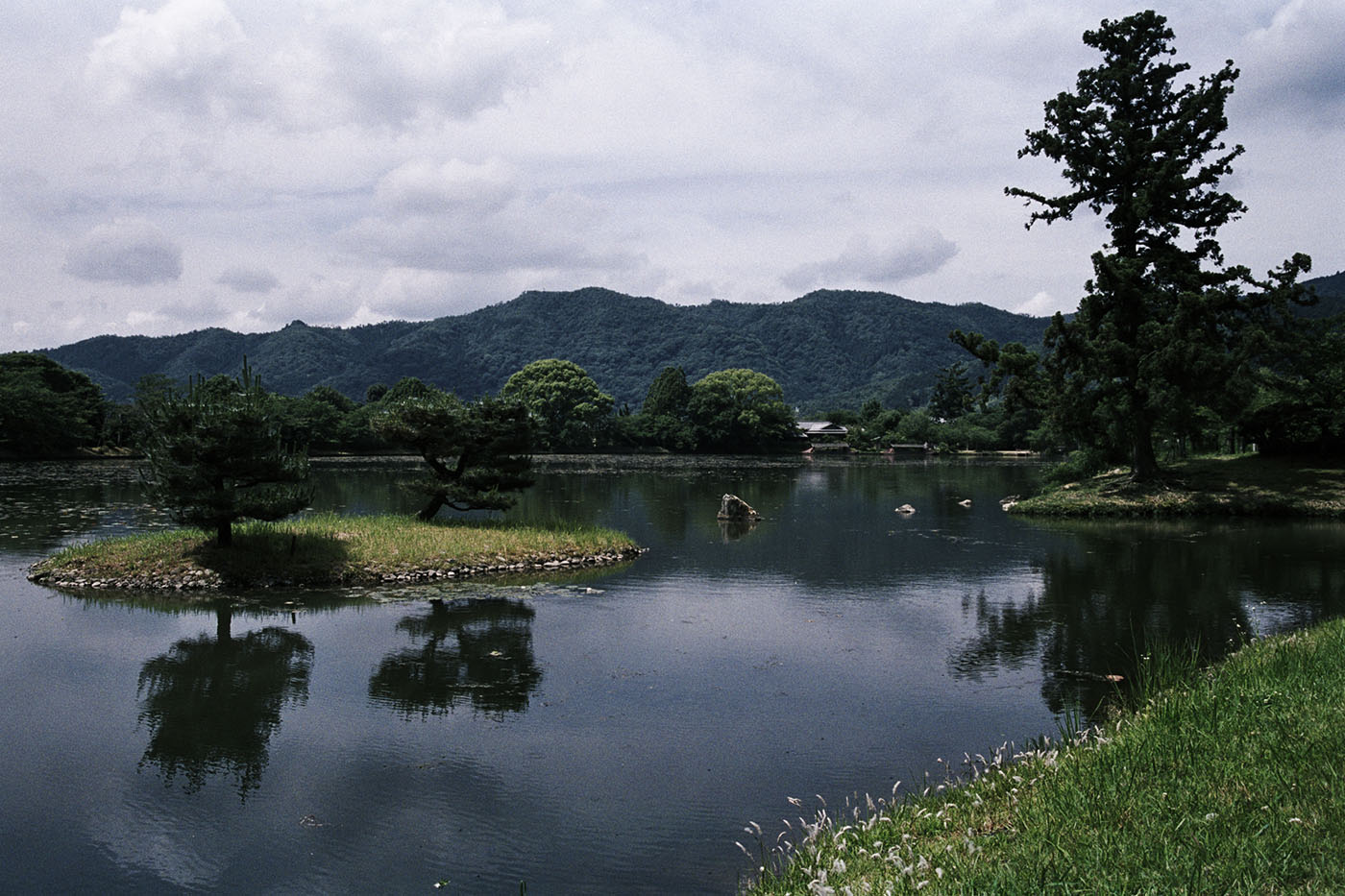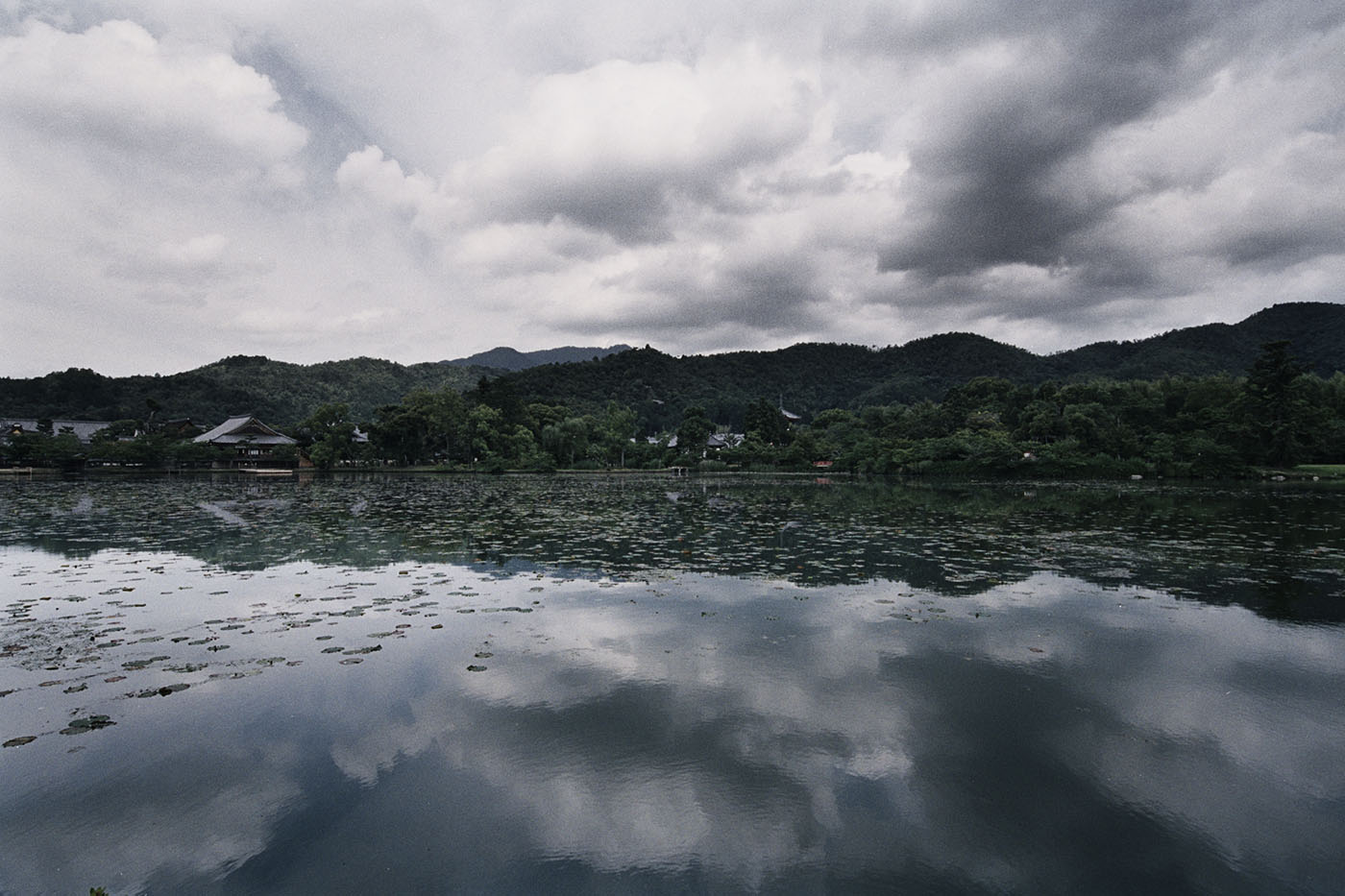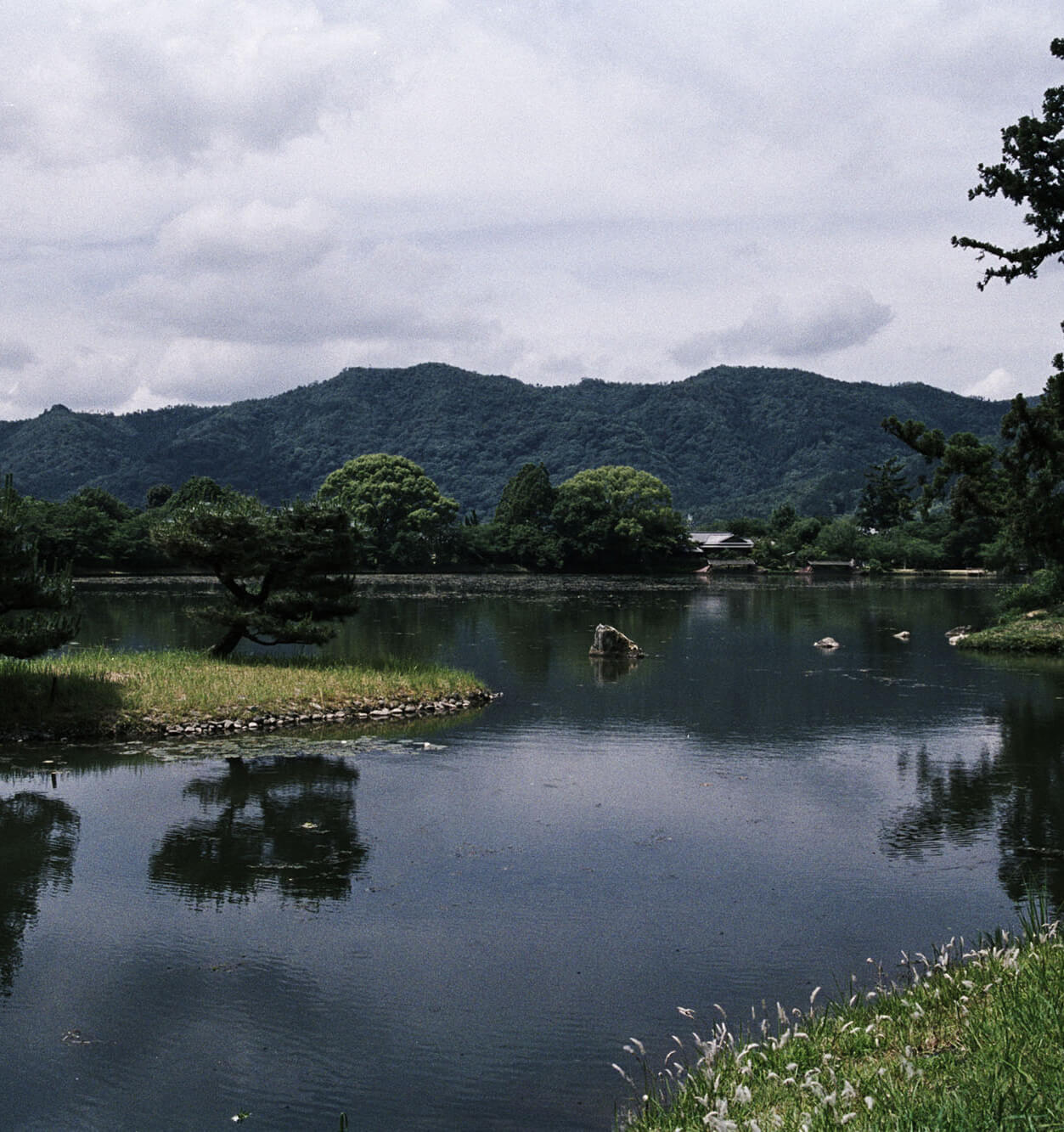DUO’S JOURNEY
Kyoto Daikaku-ji Temple, Osawa-no-ike pond
Daikaku-ji temple was originally built as an imperial villa for Emperor Saga about 1,200 years ago in the Heian period. The pond Osawa-no-ike is an artificial pond, modeled after Dongting Lake, the second-largest freshwater lake in China. The pond, about a kilometer in circumference, has shakkei that includes the mountainous region of Arashiyama. It is designated as a Place of Scenic Beauty by the national government.
Was the pond your focus on the Daikaku-ji temple grounds?
Yamaguchi: Daikaku-ji’s pond, Osawa-no-ike, was originally constructed on a slope to dam up the water. So, the other side of the bank is like a valley, and the difference in elevation separates the two sides of the pond. The water’s surface looks as if it’s floating in the air, and Arashiyama makes for stunning shakkei. Viewed from the far side of the pond, the little island appears in the foreground, the pond’s edges in the middle, and Arashiyama in the distance. It’s a beautiful sight.

As well as Arashiyama on the west side of Osawa-no-ike, there are mountains in the backdrop to the north of the pond. But these mountains continue down and blend into the pond; they’re not isolated from it like Arashiyama, so I think they’re more like background than shakkei. As with Osawa-no-ike, lots of shakkei face valleys, which is something that’s done to separate the shakkei from the garden.

Kumon: I had quite an experience at this place. The water was utterly still, and as I was looking across it at the mountains, I could feel the peace from the time it was constructed. It’s interesting that whenever I find a place compelling, Mr. Yamaguchi could explain to me from his perspective the specific techniques the garden employs to have that effect.
Mr. Kumon, what kind of lighting and weather conditions worked best for this project?
Kumon:
We spent two days in this garden. On the first day, we had a lot of backlighting from bad weather and the sky was completely white, but the location was so good, we went back the next day. That second day was sunny with great clouds. It depends on the subject and circumstances, but compared to the past when I liked taking dramatic shots with lots of backlighting, these days I mostly favor front lighting.
I think it makes more sense for this project for the photos to have front-lighting. Aside from where the sun is in the sky, cloudy days are better for photography and sunny days have a more dramatic effect. When the sun is in the west, rather unremarkable subjects get something like a spotlight shined on them. The light was slanted at Kogetsudai at Ginkaku-ji temple, but I think it’s that unevenness that struck me.
In principle, I like to choose the lighting for static subjects. There are so many different elements in the photos for this project, I wanted to keep the lighting flat because different people see different things in them. A sunny day works if I’m just trying to capture clouds reflected in the water, but with too much light, you detract from the different elevations between the pond and the mountains behind it. Whether a pine tree in the grass casts a shadow, for example, changes the meaning of a frame. It’s all situational.
Yamaguchi: That’s the power of photography, right? It’s powerful to have a photograph taken and to have that image burned into your mind. My memories of Osawa-no-ike are the images that Mr. Kumon captured. With Ninna-ji too, the reason I focused on the roofs was because of the photos taken on that rainy day, and when I see them, the beauty of that place resonates with me all over again.

October 27, 2021
